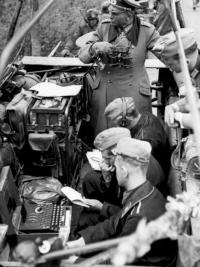
 The premise for The Gawain Legacy was inspired by a class that I
took when I studied medieval literature at University. When we were studying Sir Gawain and the Green Knight, the tutor had highlighted the complexity of the structure as well as the
repetition of numbers. It set me thinking: what if there was a code that was hidden in the manuscript that was to be discovered six hundred years later? And if there was such a trail, what might be
hidden at the end?
The premise for The Gawain Legacy was inspired by a class that I
took when I studied medieval literature at University. When we were studying Sir Gawain and the Green Knight, the tutor had highlighted the complexity of the structure as well as the
repetition of numbers. It set me thinking: what if there was a code that was hidden in the manuscript that was to be discovered six hundred years later? And if there was such a trail, what might be
hidden at the end?
I started writing and let the story carry me. When I write, I generally know how a story ends (so I know what I’m aiming for), but not necessarily why it ends that way until I get to it. Sometimes the way as story ends is as much a surprise to me as it is to the reader. One of the tasks of the second and subsequent drafts is to weave in enough signposts to foreshadow the ending, so that the reader doesn’t feel cheated that the surprise ending has apparently appeared out of nowhere. I didn’t want The Gawain Legacy to be a retelling of Gawain and the Green Knight; I wanted the manuscript to be the driving force for the novel.
I’m a firm believer in visiting the places that you’ve included in your story. It brings the location to life for the author (and ultimately for the reader) as they experience that place with all of their senses. For this story, two of the encounters I remember from when I used to organise role-playing scenarios for a youth group: there are tunnels not far from Bath, and the location for Homeforest House (not the real name) is near to High Wycombe, both of which I remember very vividly. Specifically for this novel, I visited Chester, which is a beautiful city; I also went to the healing well in North Wales and to Avignon in the South of France. I visited the healing well a couple of times, once as a writer working out how to carry my plot forward; the second time I had completed several drafts, but I visited trying to think as my characters did, and actually went into the well like a pilgrim, and followed the ritual of triple immersion. Ironically, I was at a pharmacist the next day with an eye infection: the pharmacist raised an eyebrow when I told her I’d been at a healing well.
On the occasion that I had visited Avignon, my family and I had met up in Northern Spain for Christmas and New Year (we all lived in different countries, so we found a mutual spot to meet for the festive season), so we drove home via Avignon having booked a place to stay in advance. Just as well we did, as the weather moved in very quickly and the Autoroute was blocked from Avignon onwards: many travellers were being turned away. But that was a fabulous experience of having just a few days in in Avignon, trying to see everything that might influence the story.
I work full time as a university lecturer, teaching English and Creative Writing, and the preparation and marking takes up most of my time, so when I get down to writing, it’s something of a luxury for me. I recently found that when I took my partner’s daughter to her club I would stay in the car park as, by the time I’d travelled home, it would have been time to come back again. So I started to dictate individual scenes from my stories to be woven together in the summer. It’s not a nice area of town – I joke that the dogs walk around in pairs for safety – and I’m often sitting in the dark. There’s been more than one occasion where a scene comes out of nowhere and I scare myself.
Some years ago I attended the Writers’ Conferences where I sat in seminars from published writers who explained their techniques. Some of the suggestions that I heard in those workshops have informed aspects of my writing: the first is about “sitting on the shoulders” of the characters. In The Gawain Legacy, I wanted to stay with my main character, Lara, throughout the novel; I wanted the reader to learn with her, which I find is a powerful way of driving a character-led story. (Of course, having the dramatic irony of having the readers knowing something that the character doesn’t is another way of increasing the tension – it’s a matter of personal choice). The other workshop I remember is about plotting, and in particular the “hourglass plot” which is where almost all of the elements seem to wrap up the story, but it instead leads the plot into a completely new direction.
Most particularly, though, The Gawain Legacy represents the reason why I first considered becoming a writer … I wrote the story that I would like to read. And, the story kept me guessing until the end as well, so I hope it has the same response from my readers.
Categories:
0 comments on this article







